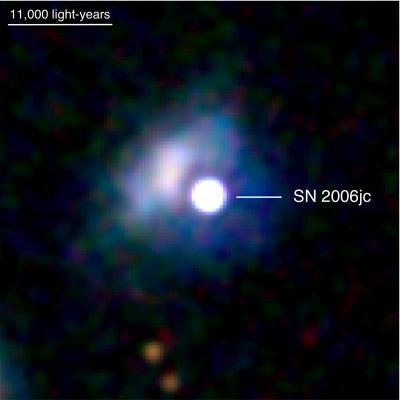In a galaxy far, far away, a massive star suffered a nasty double whammy. On Oct. 20, 2004, Japanese amateur astronomer Koichi Itagaki saw the star let loose an outburst so bright that it was initially mistaken for a supernova. The star survived, but for only two years. On Oct. 11, 2006, professional and amateur astronomers witnessed the star actually blowing itself to smithereens as Supernova 2006jc. Swift Ultraviolet/Optical Telescope image of Supernova 2006jc in the galaxy UGC 4904 in three filters. Click image to enlarge.
Swift Ultraviolet/Optical Telescope image of Supernova 2006jc in the galaxy UGC 4904 in three filters. Click image to enlarge.